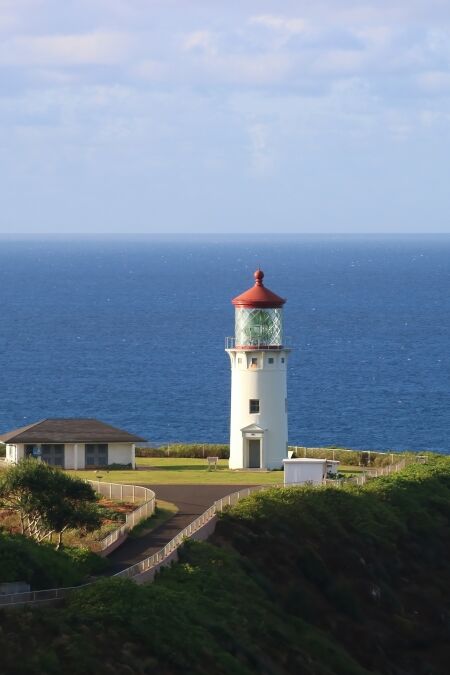Kilauea Iki Crater, located within Hawaii Volcanoes National Park, is a top hiking destination and a stunning volcanic attraction on the Big Island. This once-active crater, formed during the dramatic 1959 eruption, now features a solidified lava lake that hikers can walk across, surrounded by lush rainforest. In this guide, you’ll discover the crater’s rich history, hiking trails, unique geological features, and tips for visiting this extraordinary site.
Highlights
- Walk across the floor of what was once a molten lava lake, offering a unique hiking experience through an otherworldly landscape.
- The Kilauea Iki Trail offers stunning views from the crater rim, where visitors can look down into the crater and admire the sheer scale of the eruption site.
- Kilauea Iki Crater features a well-marked, moderate 4-mile loop trail suitable for most fitness levels.
- The crater preserves the dramatic remnants of the 1959 eruption, allowing visitors to see solidified lava, steaming vents, and hardened volcanic features.
- Located within Hawaii Volcanoes National Park, Kilauea Iki is close to other volcanic landmarks, making it easy to explore multiple volcanic sites in one visit.
History
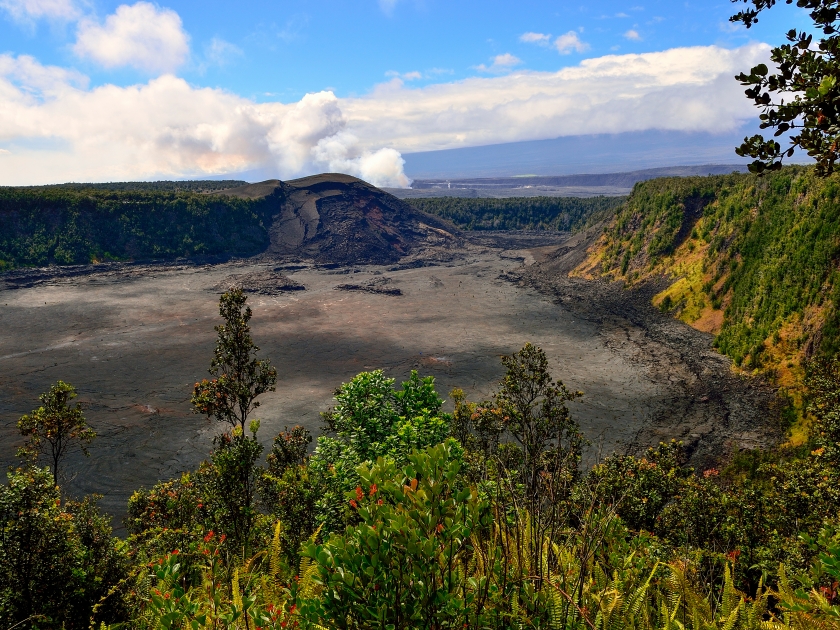
Kilauea Iki is a dramatic pit crater located at the summit of Kīlauea volcano on the Big Island of Hawaiʻi. It gained worldwide attention due to its unforgettable 1959 eruption, one of the most notable volcanic events of the 20th century.
The 1959 Eruption: A Volcanic Spectacle
Months before the eruption, Kīlauea Iki showed signs of impending activity, with increased seismic tremors and ground movement indicating magma was rising beneath the volcano. On November 14, 1959, the event culminated when a fissure opened on the western rim of the crater, releasing fountains of lava that soared as high as 1,900 feet. Over the following weeks, molten lava poured into the crater, forming a massive lava lake that eventually covered the entire floor.
Lasting Impact on the Landscape
The eruption left behind a completely transformed landscape. A new cinder cone, Puʻu Puaʻi, was formed, and the terrain of Kīlauea Iki was forever altered. Despite the eruption’s intensity, no lives were lost. The power of nature was on full display, shaping the area into what visitors can experience today.
Exploring Kīlauea Iki Today
Now, Kīlauea Iki Crater offers visitors a unique chance to walk across a solidified lava lake that was once a pool of molten rock. The crater floor, with its hardened lava flows and scattered spatter, serves as a fascinating reminder of the volcanic activity that shaped the island. This geological wonder has become a must-visit destination for those looking to explore Hawaii’s volcanic history firsthand.
Best Hiking Trails Around Kilauea Iki Crater
Kilauea Iki Trail
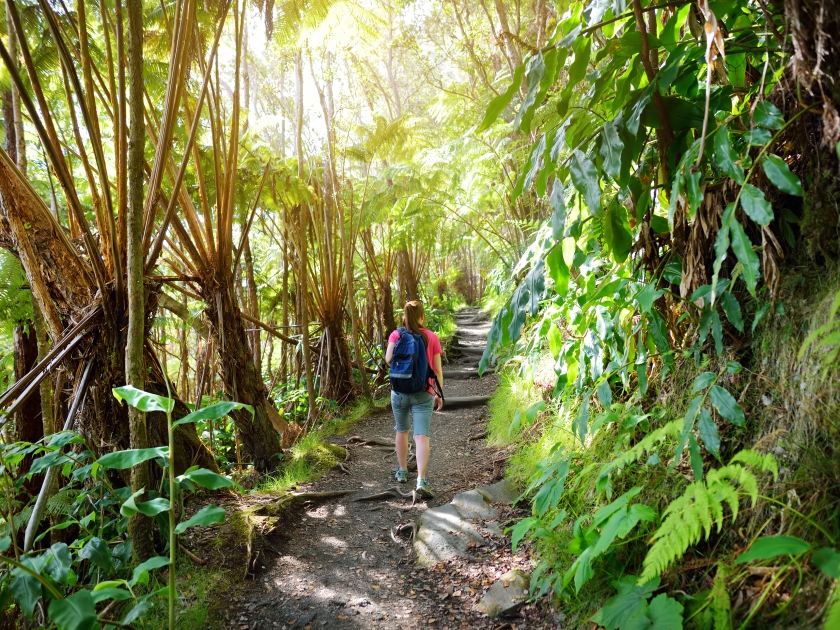
The Kilauea Iki Trail is a 4-mile loop that takes hikers across the solidified lava floor of Kilauea Iki Crater, offering a surreal walking experience on land that once bubbled with molten lava. This moderate trail typically takes about 2-3 hours to complete, with a descent through lush rainforest followed by a crossing of the crater floor. Along the way, you’ll encounter dramatic steam vents and sweeping views of the crater’s stark volcanic landscape.
Crater Rim Trail
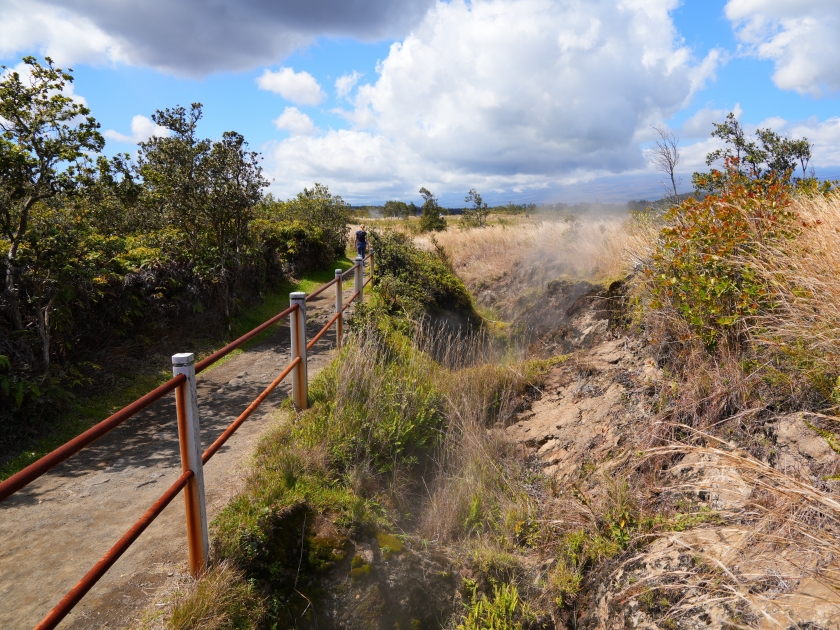
The Crater Rim Trail connects with the Kilauea Iki Trail, providing breathtaking panoramic views of the crater and surrounding area. This trail follows the edge of the crater through dense rainforest, offering glimpses of Kilauea’s volcanic power and beauty. The lush greenery contrasts sharply with the barren crater floor below, making it an ideal spot for those seeking scenic viewpoints.
What to Expect: Flora, Fauna, and Geological Features
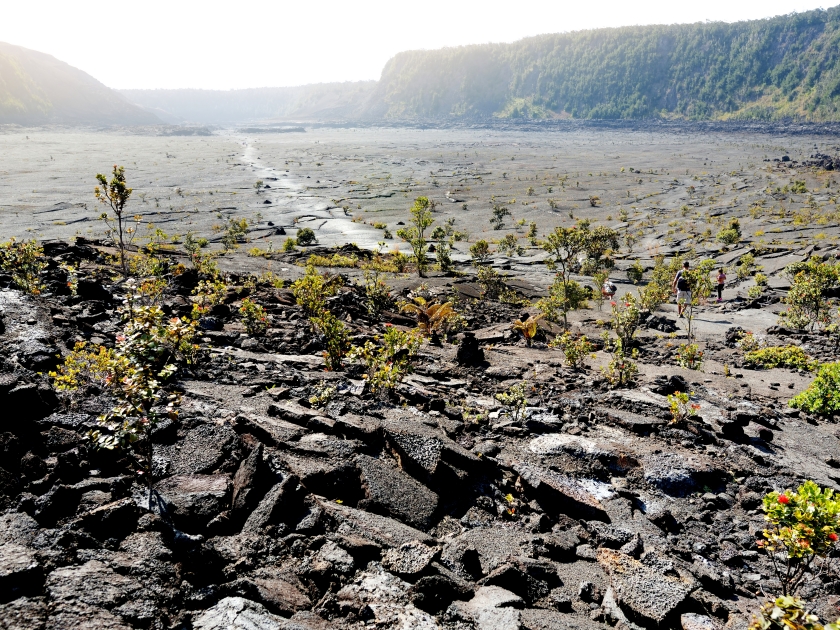
Volcanic Landscape
Kilauea Iki Crater offers a striking contrast between its solidified lava lake and the surrounding vibrant rainforest. As you explore, you’ll see cracks in the ground and active steam vents that serve as reminders of the crater’s volcanic past. These features create a dynamic landscape where remnants of past eruptions and signs of ongoing volcanic activity coexist, offering a unique glimpse into the geological forces that shaped the area.
Wildlife and Vegetation
While hiking around Kilauea Iki Crater, visitors will encounter a diverse array of native Hawaiian plants and animals. Lush ferns and native ohia trees dominate the rainforest, providing habitat for colorful bird species such as the apapane and amakihi. The contrast between the crater’s barren volcanic floor and the surrounding greenery highlights the area’s ecological diversity.
Top Highlights of Visiting Kilauea Iki Crater
The Lava Lake
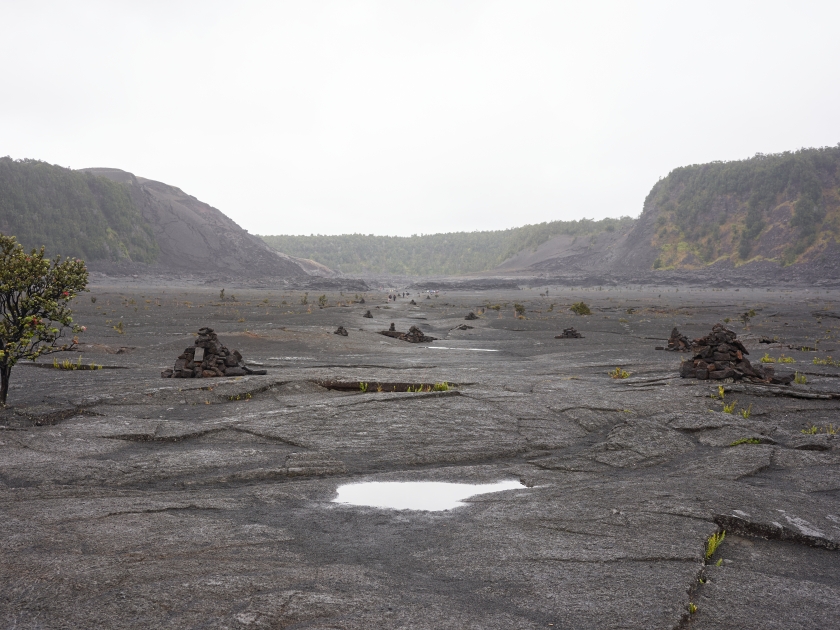
The frozen lava lake at the heart of Kilauea Iki Crater is a striking visual centerpiece, a solidified reminder of the 1959 eruption. This vast expanse of hardened lava offers a surreal and otherworldly experience as you walk across its surface, providing a glimpse into the raw power of past volcanic activity. The lake’s unique texture and dark, smooth surface make it a must-see highlight for visitors.
Pu’u Pua’i Overlook
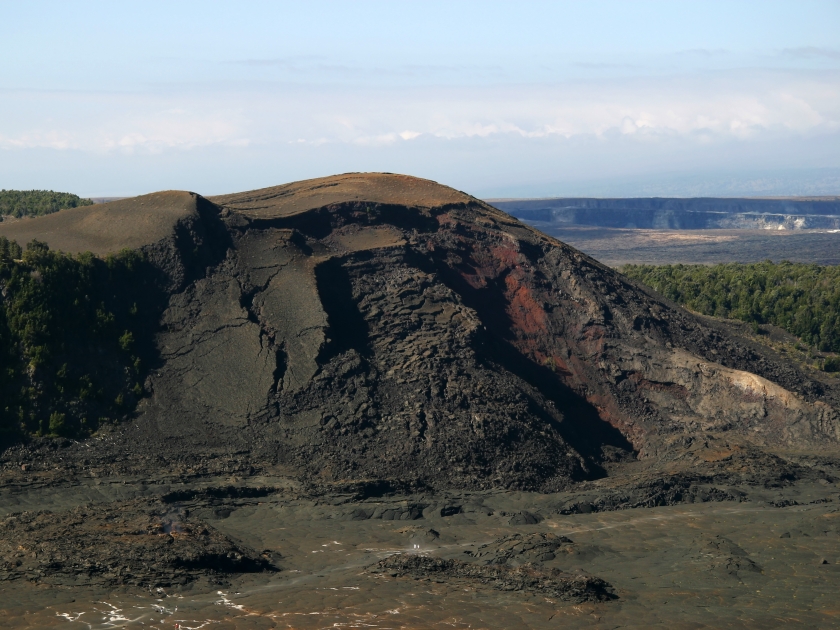
The Pu’u Pua’i Overlook offers one of the best vantage points to view the site of the dramatic 1959 eruption. From this elevated spot, you can see where lava fountains once shot 1,900 feet into the air, and today, it provides panoramic views of both Kilauea Iki Crater and the surrounding volcanic landscape, making it a perfect stop for photos and reflection.
Steam Vents
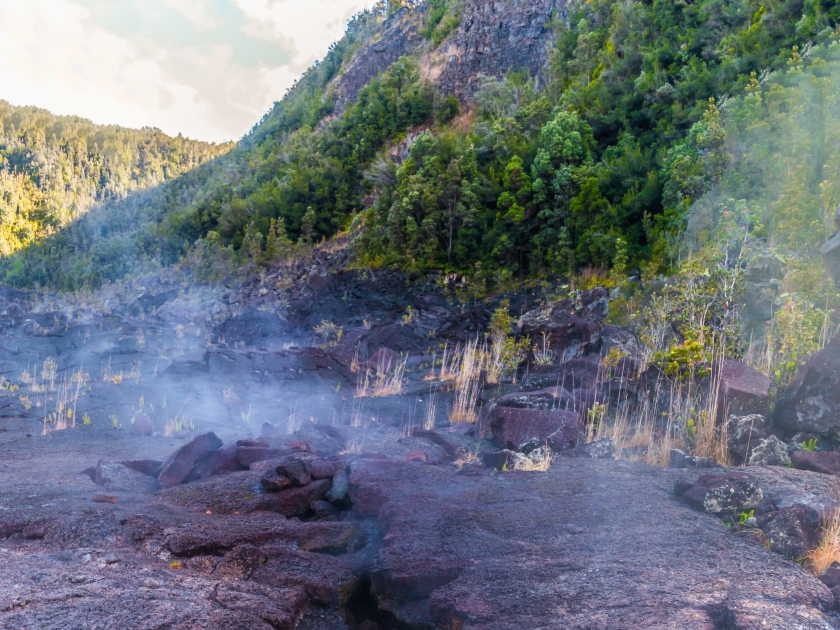
Kilauea Iki Crater is dotted with natural steam vents, which release hot gases from deep within the earth, reminding visitors that volcanic activity continues beneath the surface. These steam vents add an eerie beauty to the landscape, with wisps of steam rising from cracks in the hardened lava, showcasing the ongoing geothermal activity of the area.
Tips for Visiting
- Hiking Preparation: Wear sturdy hiking shoes, as the trail can be uneven and rocky.
- Stay Hydrated: Bring plenty of water, especially if hiking during midday when temperatures rise.
- Weather Considerations: Be prepared for rain, as the area is prone to sudden showers.
- Respect Nature: Stay on marked trails to protect the fragile volcanic landscape and rainforest.
- Parking: Arrive early to secure parking, as it can fill up quickly during peak hours.
- Safety First: Be cautious around steam vents and cracks in the ground, and avoid touching hot surfaces.
- Bring Sunscreen and a Hat: Sun protection is essential, especially when crossing the open lava lake.
- Photography: Don’t forget a camera or smartphone for capturing dramatic landscapes and panoramic views.
- Visitor Center: Stop by the Kilauea Visitor Center for trail maps, updates on volcanic activity, and ranger-led programs.
Best Times to Visit
The best times to visit Kilauea Iki Crater are early in the morning or late in the afternoon when temperatures are cooler and crowds are lighter. These times also offer beautiful lighting for photography, enhancing the contrast between the solidified lava and lush rainforest. Additionally, visiting during these off-peak hours provides a more serene and immersive experience on the trails, making it easier to enjoy the natural beauty and volcanic features without the midday heat.
Nearby Attractions in Hawaii Volcanoes National Park
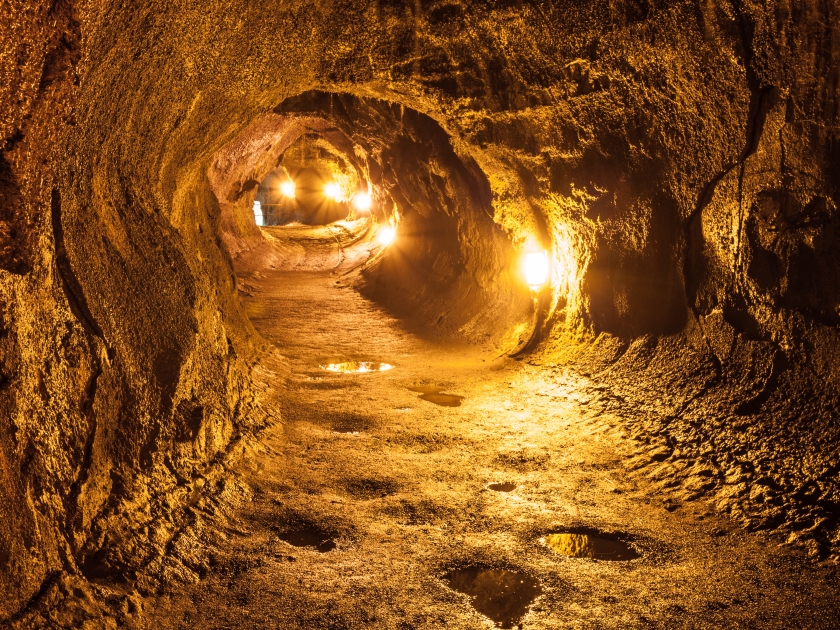
While visiting Kilauea Iki Crater, be sure to explore nearby attractions within Hawai’i Volcanoes National Park. Start at the Kilauea Visitor Center, where you can join guided tours, browse educational exhibits, and learn about ranger-led programs. Just a short distance away, the Thurston Lava Tube offers a fascinating walk through a tunnel formed by past lava flows. For a more dynamic experience, head to Halema’uma’u Crater, the current eruption site, to witness ongoing volcanic activity and get a sense of the island’s powerful geological forces.
Frequently Asked Questions (FAQs)
The Kilauea Iki Crater hike is approximately 4 miles round trip and typically takes 2 to 3 hours to complete.
No, Kilauea Iki Crater is not currently active, but it was last active during the 1959 eruption.
Visitors can see the crater’s solidified lava lake, steam vents, and lush rainforest surroundings from the trail.
Kilauea Iki Crater is located within Hawaii Volcanoes National Park, near the main summit of Kilauea.
The Kilauea Iki Crater trail is moderately difficult, with uneven terrain and a descent into the crater, but it is manageable for most hikers.
Yes, Kilauea Iki Crater is accessible year-round, but it’s recommended to check for any trail closures or weather conditions before visiting.
How to Get There
By Car
To reach Kilauea Iki Crater by car, start by navigating to Hawaii Volcanoes National Park. From Hilo, take Highway 11 south; the park entrance is approximately 30 miles away. Once inside the park, follow Crater Rim Drive, and then turn onto the Kilauea Iki Overlook Road, where you’ll find a parking area near the trailhead. Enjoy the scenic drive, as there are several viewpoints along the way, allowing you to take in the diverse landscapes and volcanic features.
By Bus
For those relying on public transportation, the most convenient option is the Mass Transit Agency’s Hele-On Bus service. Take the bus from Hilo to Hawaii Volcanoes National Park; schedules vary, so checking in advance is advisable. Once at the park, you can disembark at the Kilauea Visitor Center, where you can gather information and hike to the Kilauea Iki Crater. Ensure to plan your visit around the bus schedule to maximize your time exploring this stunning area.
Step Into the Heart of a Volcano
Hiking Kilauea Iki Crater is an unforgettable adventure that takes you through a living landscape, where the earth’s fiery past meets the lush beauty of the present. Walking across the solidified lava lake, surrounded by rich rainforest and steaming vents, offers a truly unique glimpse into Hawaii’s volcanic origins. Kilauea Iki invites you to experience the dynamic forces that continue to shape this extraordinary landscape.



